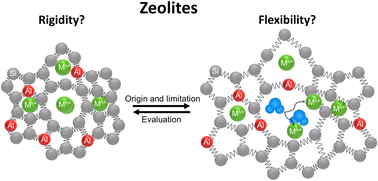Ask for a reprint
email :
* Give your email
2023
ACL
|
Sajjad Ghojavand, Eddy Dib, Svetlana Mintova, 'Flexibility in zeolites: origin, limits, and evaluation', Chem. Sci. 42 11600 (2023) doi:10.1039/d3sc03934j
Numerous pieces of evidence in the literature suggest that zeolitic materials exhibit significant intrinsic flexibility as a consequence of the spring-like behavior of Si–O and Al–O bonds and the distortion ability of Si–O–Si and Al–O–Si angles. Understanding the origin of flexibility and how it may be tuned to afford high adsorption selectivity in zeolites is a big challenge. Zeolite flexibility may be triggered by changes in temperature, pressure, or chemical composition of the framework and extra-framework compounds, as well as by the presence of guest molecules. Therefore, zeolite flexibility can be classified into three categories: (i) temperature and pressure-induced flexibility; (ii) guest-induced flexibility; and (iii) compositionally-induced flexibility. An outlook on zeolite flexibility and the challenges met during the precise experimental evaluations of zeolites will be discussed. Overcoming these challenges will provide an important tool for designing novel selective adsorbents.
|

|